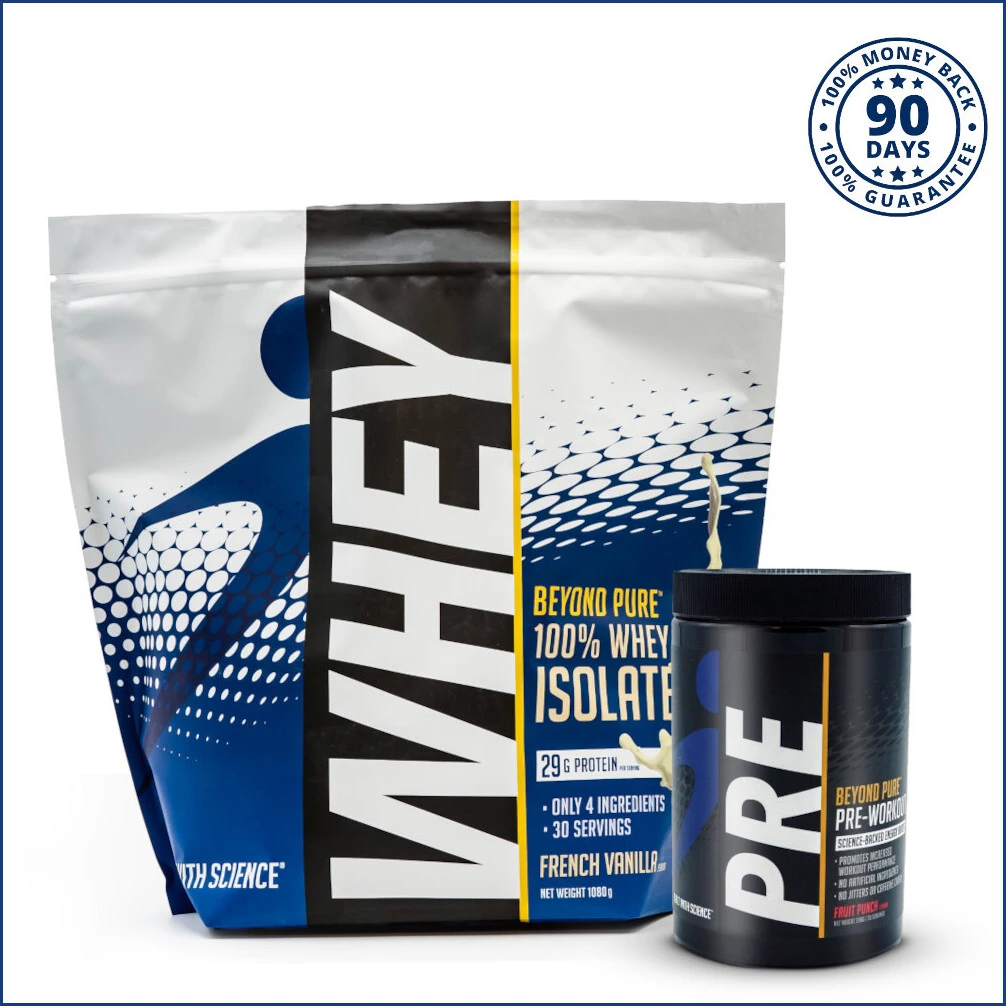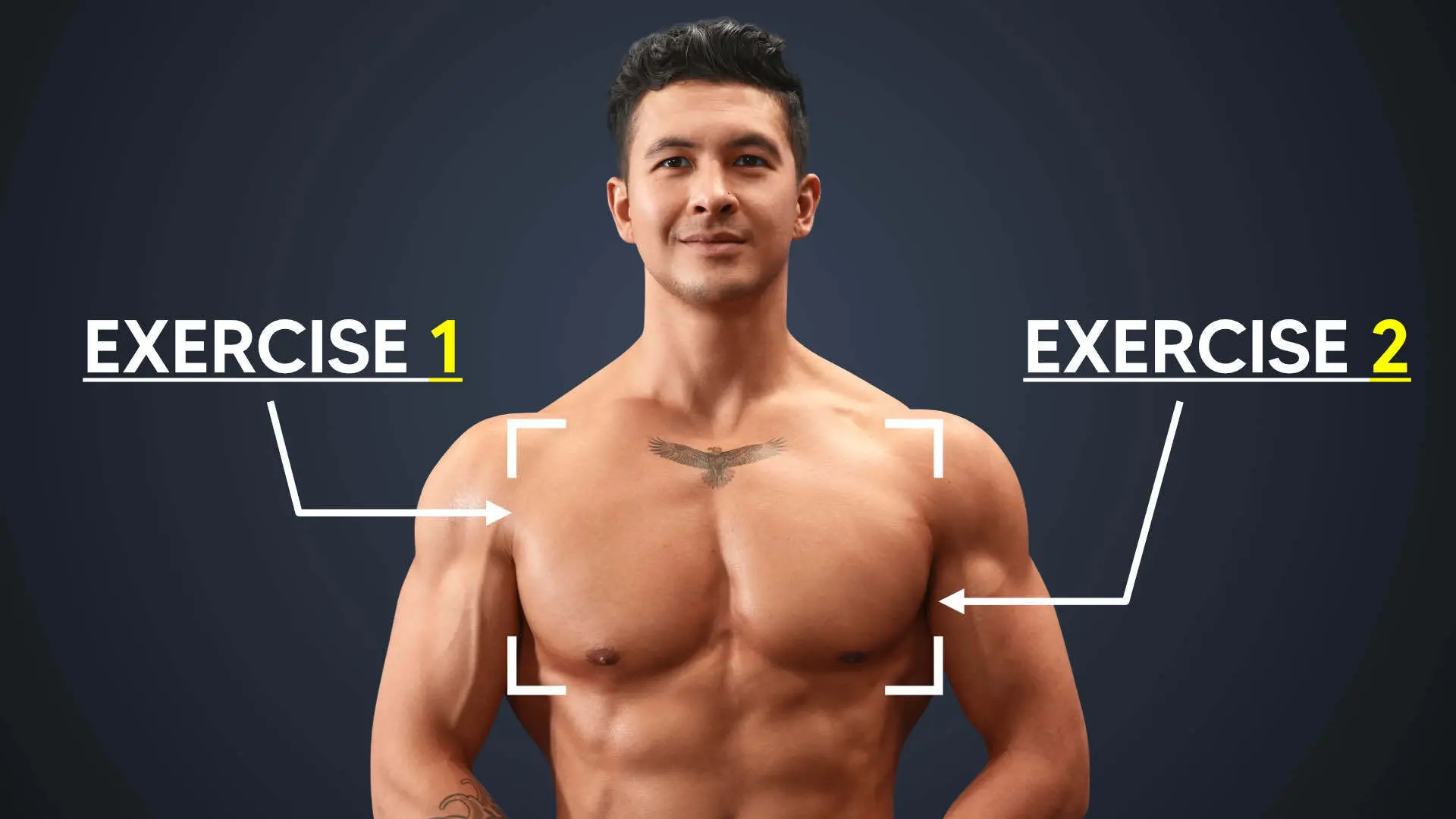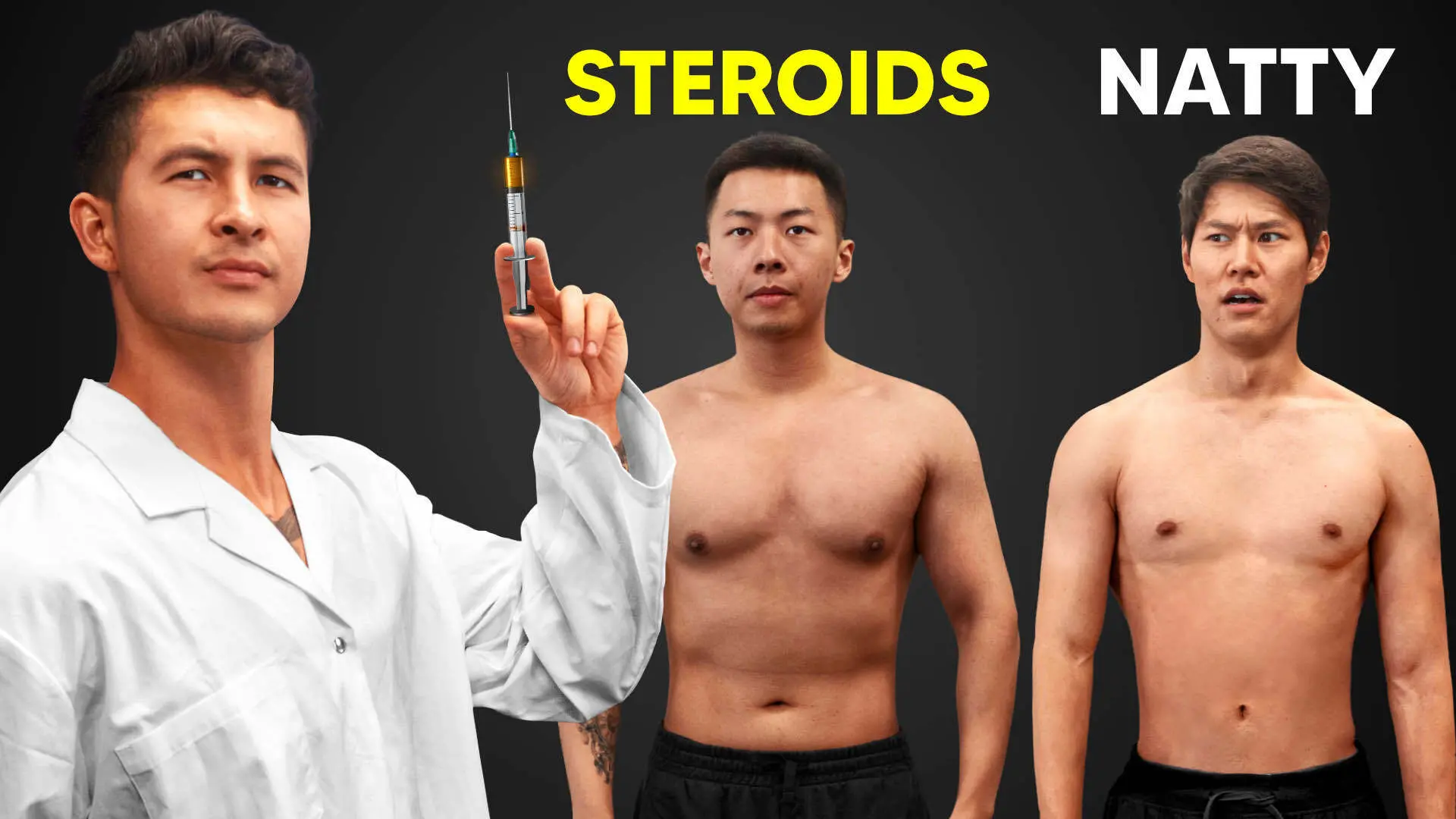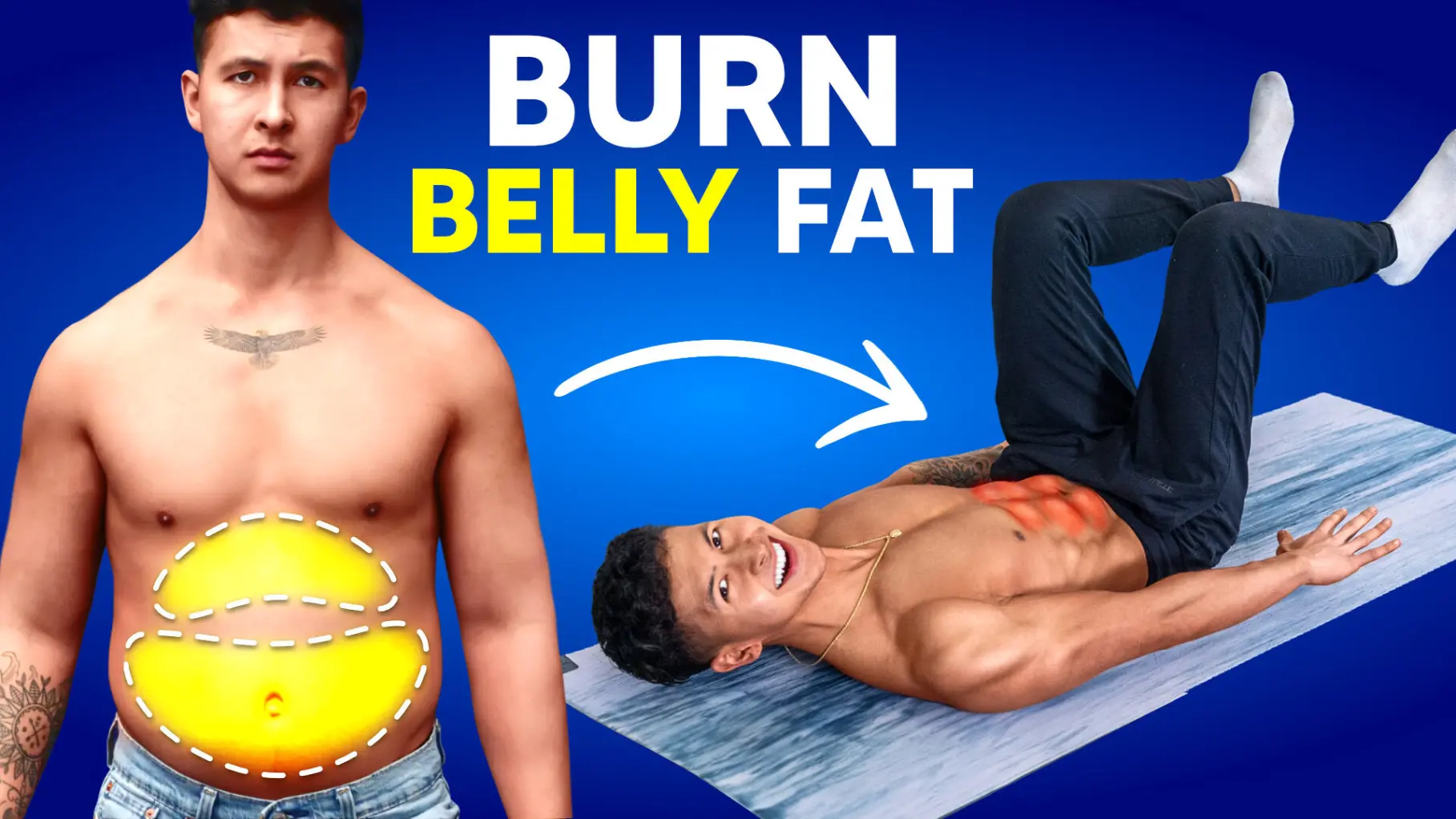
Targeting Belly Fat Is Possible?! (New Study)
Everyone wants to lose that stubborn belly fat, right? Problem is, you can't choose where your body burns fat from every time you workout.
Or at least, I didn’t think you could…
Until I came across this new study, which said that targeting belly fat may not only be possible, but also much easier than we all thought.
In this article, I’ll share exactly what researchers have found, and how you can apply it to your own training.
Why Is It Difficult To Lose Belly Fat?
First things first. Why is belly fat so stubborn?
I have the same problem: my belly has always been the hardest area to lose fat from.
Even when I’d lose weight, it seemed like my belly fat just wouldn’t budge.
And for the longest time, I thought it was impossible to “spot reduce” fat from that area — to pick and choose where I burned it from.
All the scientists I spoke with also felt the same, including my good friend Dr. Bill Campbell who runs a lab dedicated to fat loss out of the University of South Florida.
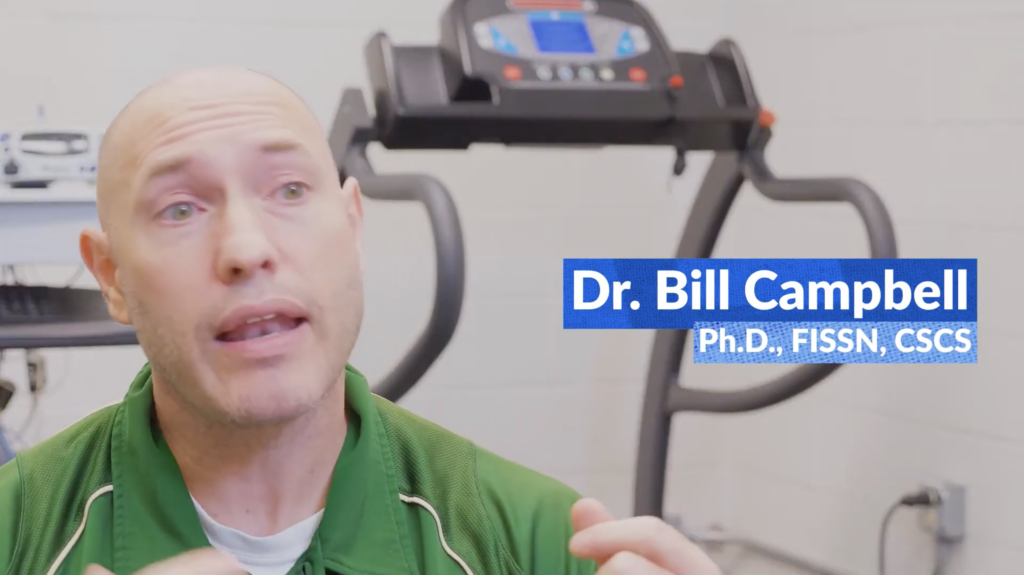
Here's what he said about spot reduction:
"I'm one of the people that have said for years, and I've been asked a lot, can you spot reduce? And my answer has always been no. The research that exists is not very strong, and most of the research that's been done on this has suggested or reported that it's not possible.”
But this got me wondering, why is belly fat so “stubborn” in the first place?
Well, I looked into it, and I’m glad that I did, because once you understand this, all the new research makes a lot more sense.
What Needs To Happen For Your Body To Burn Fat
You see, to burn fat, your body first needs to “release it” from the ‘fat cell’ — a process known as ‘mobilization’.
Once you’ve mobilized the fat, it can then be burned off for energy.
But how exactly do you mobilize it?
Well, when you strength train, you don’t just strengthen your muscles; you also increase blood flow to the fat that surrounds the muscle you’re working.
But "Mobilizing" Belly Fat Is Difficult
And this is one theory why belly fat can be so hard to get rid of: compared to the fat in other areas of your body, it tends to receive very little blood flow.
Not to mention, we tend to train our abs less frequently than other muscles.
Think about it. Your quads and hamstrings are used all the time. Running, squatting … walking, you name it. They’re some of the largest muscles in your body and so they receive a large increase in blood flow when you’re working out.
But your belly? Well, not so much.
So, this got researchers thinking: if you can boost blood flow to your abs, could you then specifically target belly fat during exercise?
And if you can target your belly fat, why stop there? Theoretically, by increasing blood flow to the right spots, you could reduce fat in any area you choose.
…
Theoretically.
Here's What Studies Focused On Fat Mobilization Found
After digging through endless research papers, I’ve come across all sorts of funny and, in some cases, just weird experiments researchers have tried to get to the bottom of this question
One study had participants do over 5000 sit-ups in 27 days, which honestly might be more than the rest of us have done in our entire lives.
Another one had participants do 12 weeks of high-intensity leg pressing … on one leg. All to answer the question: can you choose where you burn fat?
But neither study found a notable difference in fat loss.
And because of this, most researchers, including Bill, were skeptical about the idea of spot reduction:
"People would, let's say, do hundreds and hundreds of crunches, and they would say, well, now I'm going to have a defined midsection. And my response would be, well, that's not really how it works."
However, as it turns out, there was 1 thing that pretty much all of these studies overlooked.
Is It Possible To Target Belly Fat?
Remember how I said you need to “mobilize” fat before it can be burned off?
Well, there’s 2 parts to this process: first, mobilizing it… and then… burning it off.
The issue with past studies, such as the 5000 sit-ups one, is that while they may have mobilized belly fat, this doesn’t necessarily lead to burning it off.
Study 1
But this is where a 2023 study comes into the picture. They wanted to test a routine that could do both.
I got Bill's thoughts on it:
"Yeah, so the results did surprise me. Just relying on my past knowledge, my thoughts were, I don't expect any type of spot reduction outcome to be reported, but that's exactly what was reported and the design was good.”
Basically, researchers divided 16 overweight men into two groups:
- Spot reduction focused group
- Control group
Both followed a 4-day workout plan for 10 weeks.
The control group did 45-minutes on the treadmill each session.
Meanwhile, the spot reduction group had a shorter, 27-minute treadmill workout, followed by two ab exercises: torso rotations and machine crunches.
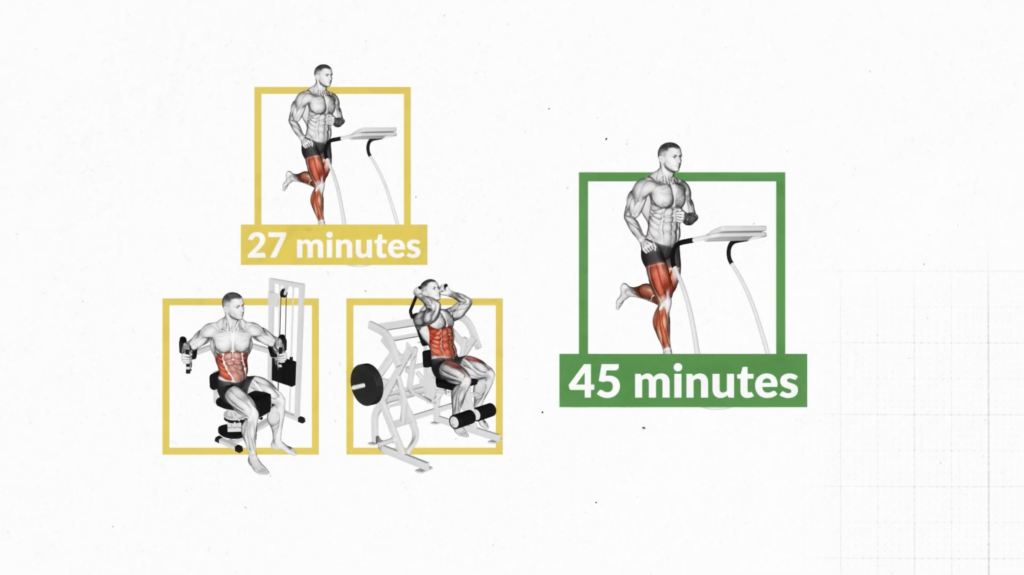
This study was unique because it was also the first of its kind to make sure that the same amount of calories were burned in both workouts groups.
On that, Bill commented:
“And this is a big problem with a lot of prior research. If you don't equate the calories being burned, you don't have much faith in whatever body fat outcomes are being reported, because it could be that they just burn more calories, and of course they're going to lose more fat.”
So, what happened?
Well after the 10 weeks, both groups lost a relatively similar amount of body fat (1705 and 1134) (3.8lbs and 2.5).
But what was surprising was that the spot reduction group lost almost 2.5x more fat from around their belly (1,171 grams [2.6lbs] vs 470 grams [1lbs]) compared to the control group. And their measurement technique was pretty good as well.
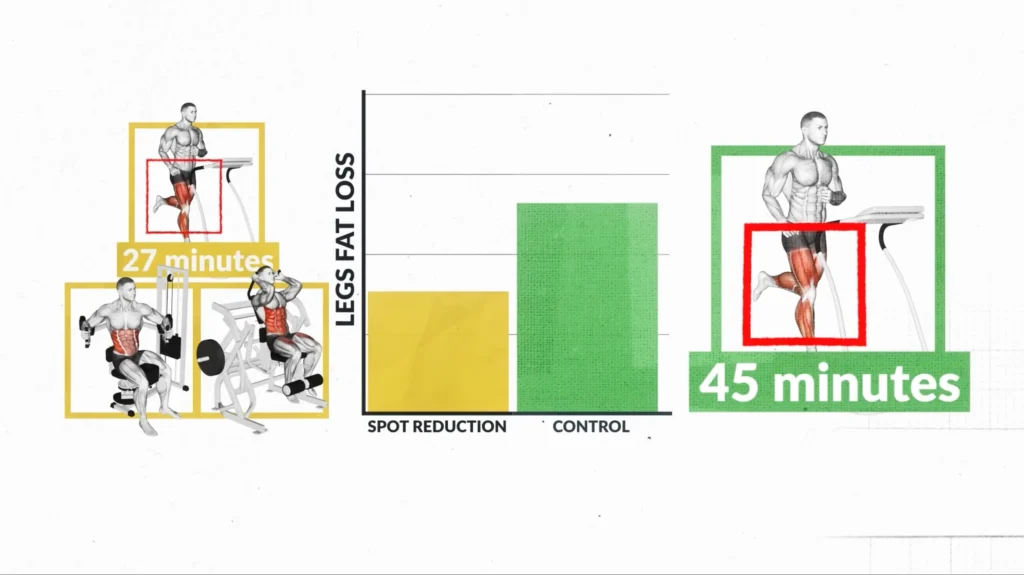
Bill was impressed:
"Prior studies? Some of them have used skinfolds, and while skinfolds are good, they're definitely not the best to use for spot reduction. We would like a more sensitive measure, things like DEXA or MRI or ultrasound. And what they used in this study was DEXA, and DEXA is a great body fat measurement tool.”
But it doesn’t stop there.
Though there wasn’t a huge difference, what’s also interesting is that the treadmill-only group also lost more fat from their legs than the spot reduction group.
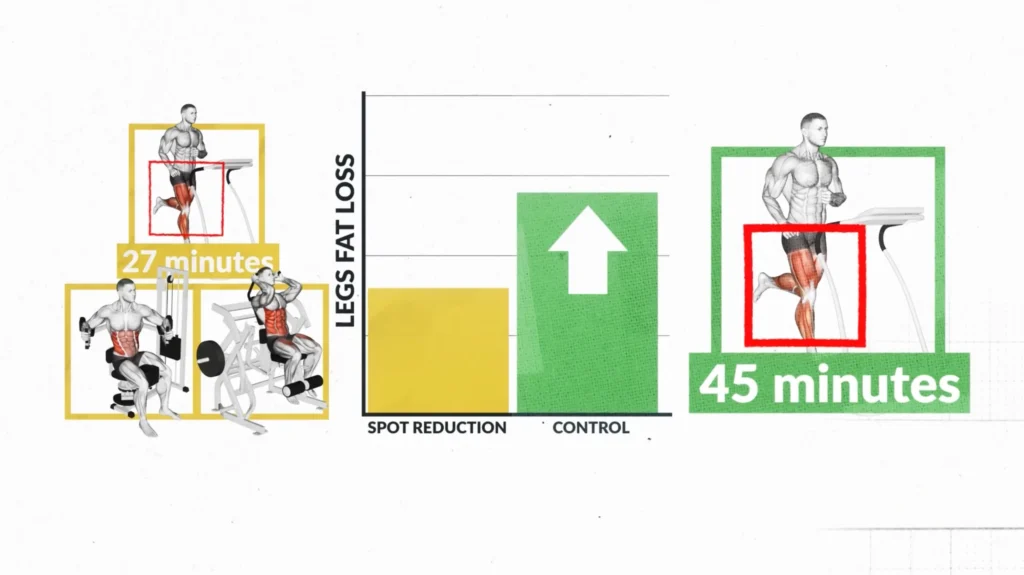
And if the spot reduction theory holds true, well then, this result makes sense since they did more running.
But of course this study doesn’t come without its limitations.
Per Bill:
"One of the criticisms of the study was, well, they had more fat to start with, which they did, but they still lost like 3% more total fat in the trunk areas, like 7% versus 4%. So even when you account for the fact that this spot reduction group had more fat to start with, they still lost significantly more fat, even accounting for baseline levels.”
Also, although DEXA scans are good for measuring fat loss, they aren't perfect.
I would have preferred they use MRI scans which are even more accurate, but it is a lot more expensive.
And although the workouts were tightly controlled, the nutrition wasn’t. Personally, I don’t think this is too big of a concern given that both groups lost a relatively similar amount of overall fat, but it is something that would’ve made this study a lot stronger.
But hey, it’s not just this study. Other recent studies on spot reduction have also shown promising results.
Study 2
In 2017, there was a similar experiment.
Researchers had one group perform an upper body workout, then follow it with 30 minutes of cardio, and another group do a lower body workout, followed by the same 30 minutes of cardio.
Both groups performed the same number of exercises, sets, and reps; and they both did this 3 times per week.
After 12 weeks, both groups lost a near identical amount of total body fat.
But again, what was interesting was that the upper body group lost more fat in their upper body, and the lower body workout group lost more fat in their lower body.
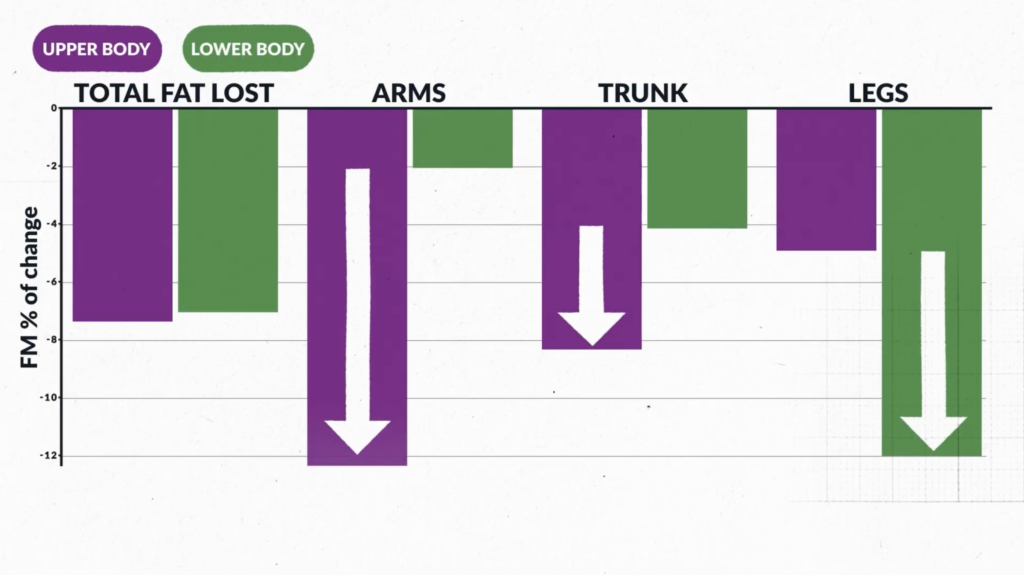
Study 3
And more recently, in 2021, another study found something similar.
Just like the 2023 study, their idea was to use abs exercises to mobilize belly fat, and then combine it with cardio to burn that belly fat as fuel, and they too found promising results primarily in the upper belly area.
Again, the studies do have their limitations — all studies do — but this research is still exciting to see, and I’m sure a lot more will be done in this area.
And what’s nice is that the results of these studies still offer some practical takeaways which you can immediately use in your workouts to target belly fat (or any stubborn fat, for that matter).
How Do I Target Belly Fat?
Before I get into them though, let me say this: if losing belly fat is your goal, then you need to be in a caloric deficit to get the best results. It’s highly unlikely you’ll be able to gain weight while simultaneously spot-reducing belly fat.
What the studies do suggest is that, if you’re doing ab work, you should probably combine it with some form of cardio either shortly before or after to get the most bang for your buck.
Bill agrees:
“Yeah, it has to be of such an intensity and or duration that it actually causes an increase in what we call oxidation, where you're actually burning the fat. So yes, as an example, you couldn't perform these studies and go for a three minute walk and come back and think, oh, I should have spot reduction.”
The other thing is that, if spot reduction does work, then it seems like some abs exercises are better than others.
Here's what Bill said:
“I don't see planks as targeting the abdominal region, the abdominal muscles as much as crunches in abdominal torso rotations. I see planks as being a little bit more global in its low back transverse abdominis, abdominals, hip flexors. So I would suggest, and again, being a scientist rely on the data that we have both used crunches and one used crunches and abdominal torso rotation. So I would think, yes, the abdominal exercise does matter.”
So if I was designing a routine to better target belly fat, I’d use direct, weighted abs exercises combined with low to moderate intensity cardio. Which could look something like this:
- 4 sets of 8-15 reps of weighted crunches
- 4 sets of 6-15 reps of hanging leg raises
- 20-30 minutes of low to moderate cardio (for example, cycling, jogging, or the elliptical) done before or after the ab exercises
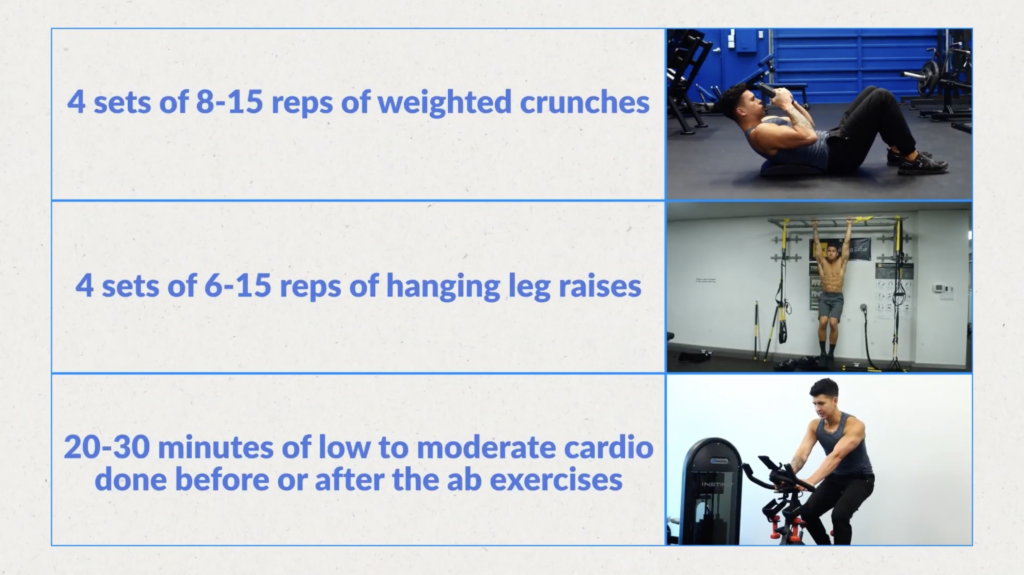
TL;DR
- Your body needs to “release” fat from the cell (i.e., “mobilization”) before it can be burned off.
- “Mobilizing” belly fat is difficult because 1) it receives very little blood flow, and 2) we tend to train our abs less frequently.
- Recent studies focused on mobilizing and burning off belly fat have found promising results.
- In addition to being in a calorie deficit (a necessity!), combine direct, weighted abs exercise with low-to-moderate-intensity cardio to target belly fat.
A Closing Note On Spot Reducing Belly Fat
I’ll be honest though, I’m still not 100% convinced. And neither was Bill when I spoke to him.
These latest studies have definitely opened my mind to spot reduction being possible, and it seems like future research could be promising. But it’s definitely not enough for me to go about planning spot-reduction into most people’s routines.
That said, on my recovery days I have been using those 2 ab exercises and slapping on some cardio either before or after. Who knows, maybe this is giving me the ‘spot reducing’ effect for my belly fat.
But even if it’s not, I still highly recommend that you regularly train your abs, and with weight as well.
Once I started training them consistently, they seemed to appear more visible even during bulks where my body fat was increasing.
After all, they’re just like any other muscle group; and growing them can help with definition.
But remember, most of your results will still come from the basics, and losing belly fat heavily depends on your diet.
In fact, most people completely underestimate just how many calories are in their usual food choices. And this is why, even people who eat clean and work hard, still struggle to shed their belly fat.
To help with this, I worked with our lead dietician Kelly, to show you how you can eat twice as much food, while keeping calories the same. You can check that out here.
And for those who want more step-by-step guidance with their training and nutrition, just take our quiz and discover what approach is best for you and your body:
Click the button below to take my analysis quiz to discover the best program for you:
↓
Thanks so much for sticking to the end, and I’ll see ya next time!



